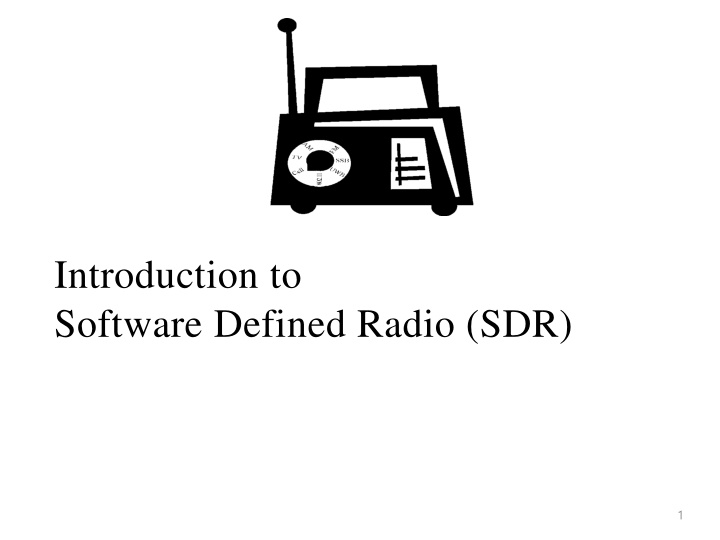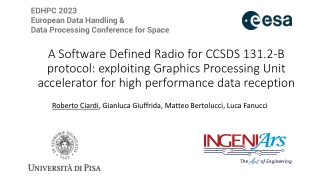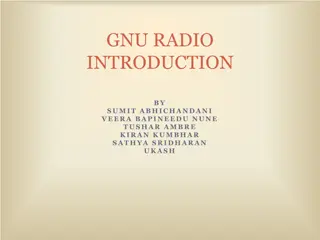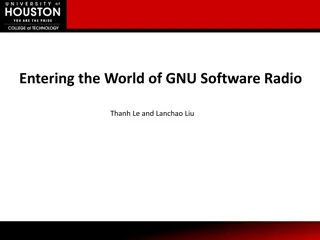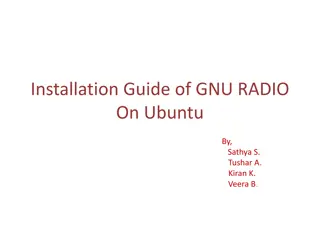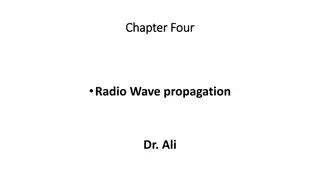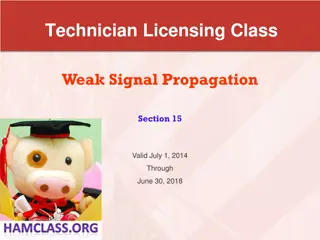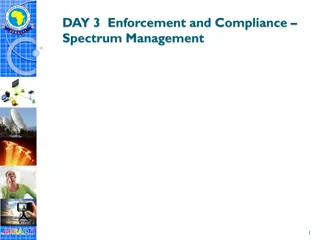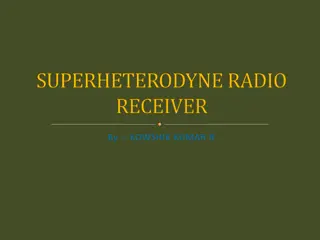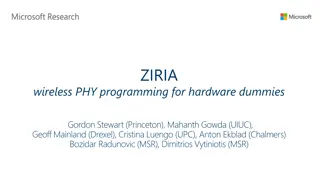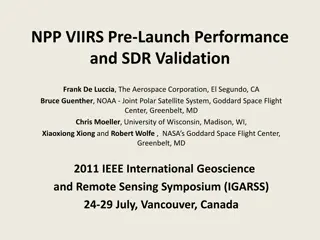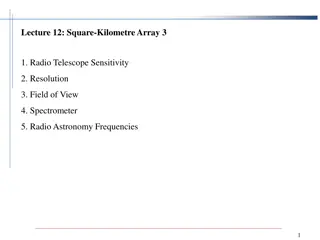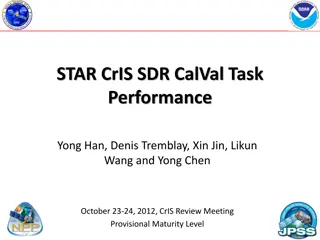Introduction to Software Defined Radio (SDR) by Sandesh K.A.
Software Defined Radio (SDR) is a transformative technology where software modules run on flexible hardware platforms to implement radio functions. This introduction covers SDR basics, reasons for its adoption, hardware requirements, SDR architecture, available hardware options, and software used across Windows, Mac, Linux, and Android platforms.
Download Presentation

Please find below an Image/Link to download the presentation.
The content on the website is provided AS IS for your information and personal use only. It may not be sold, licensed, or shared on other websites without obtaining consent from the author.If you encounter any issues during the download, it is possible that the publisher has removed the file from their server.
You are allowed to download the files provided on this website for personal or commercial use, subject to the condition that they are used lawfully. All files are the property of their respective owners.
The content on the website is provided AS IS for your information and personal use only. It may not be sold, licensed, or shared on other websites without obtaining consent from the author.
E N D
Presentation Transcript
Introduction to Software Defined Radio (SDR) Sandesh K A 4NI11EC047 1
OUTLINE Introduction Circuit design Working Applications Benefits Disadvantages Future Scope 2
Introduction What is SDR ? It is a technology wherein software modules running on a generic hardware platform consisting of DSPs andgeneral purpose microprocessors are used to implement radio functions 3
WHY SDR ? To produce a radio that can receive and transmit a new formof radio protocol just by running newsoftware. A technique in which all the processing is done in software i.e., mixing, filtering, demodulationetc. Used to implement different demodulation scheme and different standards can be implemented in the samedevice. Can be updated so thatdevice doesn t become obsoletewith time. 4
If software does everything what is the role of hardware ? Hardware is still needed for the RF front end and Analog toDigital Convertor (ADC) and Digital to Analog Converter (DAC)(DAC) . 5
HARDWARE List of SDRs: https://en.wikipedia.org/wiki/List_of_software-defined_radios Low Cost RTL2832U-Realtek SDR dongle 24-1766 MHZ $10-$30 Medium cost FunCube DonglePro HackRF One BladeRF 150kHz-2.05GHz 10MHz-0.6GHz 300MHz-3.8GHz $124.99-200 299 $420-$460 High cost : USRP! USRPB200 UmTRX $707 $675 $1500 70MHz-6GHz 300MHZ-3.8GHz 8
SOFTWARE Windows , Mac and Linux (Cross Platform) GNU Radio Open Source Toolkit used by most SDR (includes GNU Radio Companion) Library used to interface with hardware Linard Open Source Windows SDR# HDSDR spectrum viewer spectrum viewer Open Source Open Source 9
Mac and Linux Gqrx spectrum viewer Open Source Android SDR touch RTL2832U driver ADSB Receiver ADS-8 on USB SDR RTl Free(trail)/$9.99 pro Driver for RTL-SDR Free $1.50 10
Software communications architecture (SCA) Provides a real-time software operating-system environment to support the dynamic waveform generation and signal processing aspects of a radio , as well as the administrative aspects forradio installation and changecontrol. Such an example of standardized architecture of hardware and soft ware will lead to generic, flexible radio systems which maybe loaded with applications to suit particular operatingscenarios. SDR may be flexible enough to operate in several modes at thesame time and some may be capable of changing or adding modes while continuing operation in othermodes. 11
CORBA(common object request broker architecture) CORBA is the Object Management Group (OMG) s open architecture that provides the infrastructure for computer applications to work together over a network. It has been chosen as the middleware layer of theSoftware Communications Architecture (SCA), because of the wide commercial availability of CORBA products and its industry acceptance. Used to provide a cross-platform middleware service thatsimplifies standardized client/server operations by hiding the actual communication mechanisms under an object request broker software bus 13
Python auto generated code from gnuradio import analog from gnuradio import audio from gnuradio import blocks from gnuradio import eng_notation from gnuradio import gr from gnuradio import window from gnuradio.eng_option import eng_option from gnuradio.gr import firdes from gnuradio.wxgui import fftsink2 f rom gnuradio.wxgui import forms from gnuradio.wxgui import scopesink2 from grc_gnuradio import wxgui as grc_wxgui from optparse import OptionParser import wx class dial_tone(grc_wxgui.top_block_gui): def init (self): grc_wxgui.top_block_gui. _icon_path = "/usr/share/icons/hicolor/32x32/apps/gnuradio-grc.png" self.SetIcon(wx.Icon(_icon_path, wx.BITMAP_TYPE_ANY)) self.samp_rate = samp_rate = 32000 self.noise_slider = noise_slider = .005 _noise_slider_sizer = wx.BoxSizer(wx.VERTICAL) init__(self, title="Dial Tone") 19
Applications Of SDR Technology Public safety Cell phone technology Military applications Commercial use of SDR 20
Benefits Of SDR Technology User benefits(personalized modulationscheme) Manufacturerbenefits Interoperability Intelligent transport systems(ITS) Spaceconsiderations Powerconsiderations Reconfigurationconsiderations Other land mobilesystems 21
Disadvantages of SDR: There are technology limits on achievable RF performances For very wide frequency coverage, the RF hardware may need to be built in separate portions of circuitry dedicated to particular frequency ranges Two tone Inter Modulation Distortion(IMD) The choice of architecture depends on the available technology Complexity in using the software Software reliability may define overall radio reliability, rather than hardware limitations 22
Future Scope Adaptive Radio: Communication Systems which have means of measuring their own performance and alter them to provide high performance. SDR helps to provide high degree of freedom CognitiveRadio: Communication systems are aware of the ir internal state and environment, such as location and utilization on RF frequency spectrum at that location. They can make decisions about their radio operating behavior by mapping that information against predefined objectives. 23
